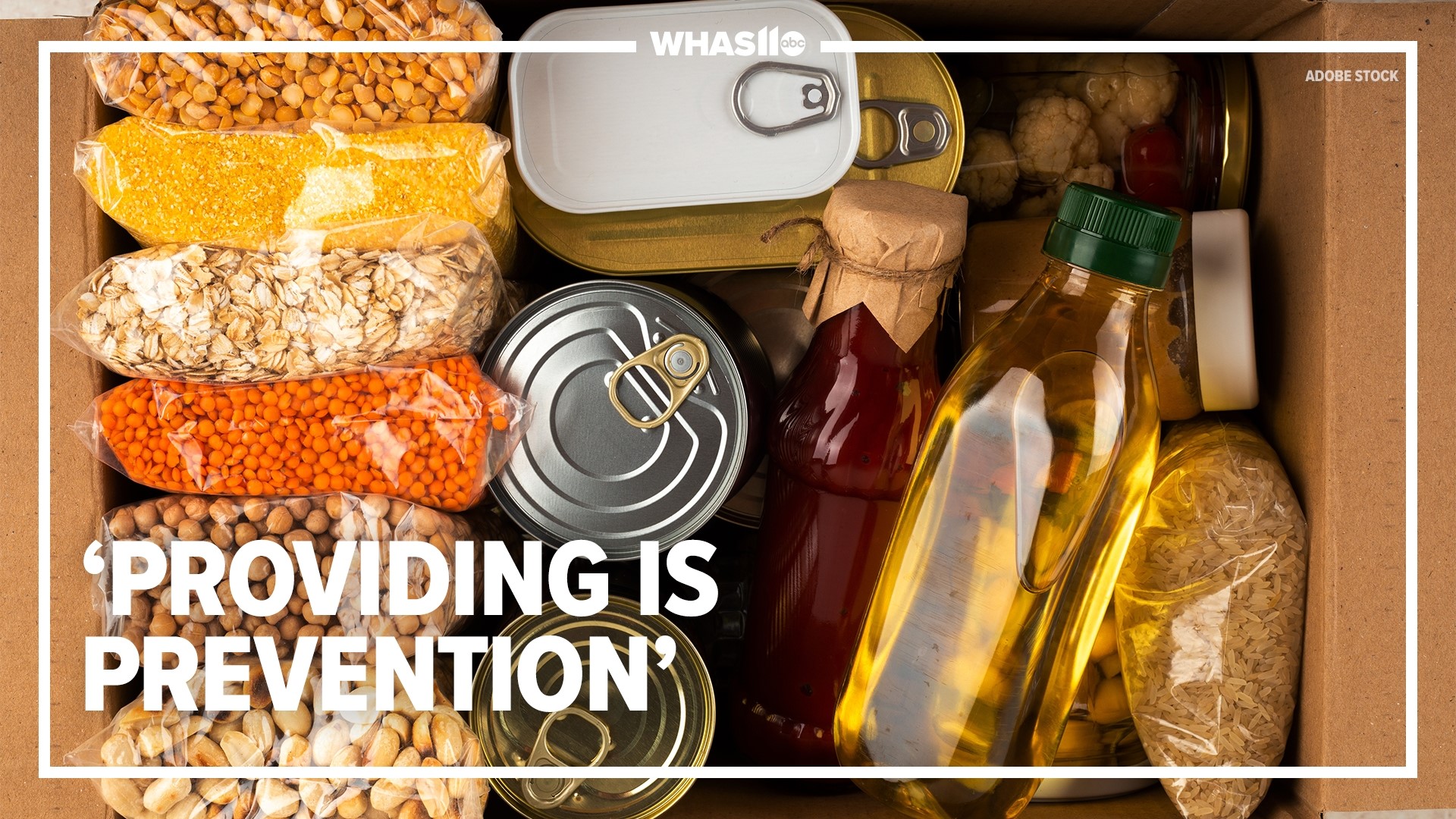LOUISVILLE, Ky. — Around 16% of children in Jefferson County are food insecure, and almost 12% of Jefferson County's total population lacks consistent access to nutritional food according to Dare to Care.
It's an issue organizations are working to tackle, but the impact of food insecurity ripples through our community and goes far beyond hunger.
Vincent James, the president and CEO of Dare to Care Food Bank in Louisville, flagged food insecurity as an issue at the core of the city's rising rates of violent crime.
"If I were to take a heat map, and place all the violent crimes in our city, and cross overlay that will all the areas of food insecurity, it would be the same," he said.
The correlation between food insecurity and violent crime is widely researched nationally and around the world. A study from Clemson showed that for every 1% rise in food insecurity, violent crime rates increased by 12%.
If you look at east Louisville, you'll notice several major grocery stores offering foods that are widely considered to be staples of healthy and proper nutrition. But if you look at West Louisville, you'll find only two.
That's two grocery stores for a population of more than 60,000 people. The median income is $22,000 a year and transportation is often limited.
"When is the last time you've been hungry? And couldn't eat, or couldn't buy food?" Taylor Ryan, founder and executive director of Change Today Change Tomorrow in west Louisville, asked. "Or you were hungry, and you couldn't get anywhere because you don't have a car."
Ryan's organization is fighting for food justice and public health in west Louisville.
"It is atrocious. It is disgusting. Like to me, is, it's a slap in the face. To know that like there's constantly grocery stores popping up in the East End," she said. "I have more general Dollar General Stores, and dollar stores in the neighborhood and Mom and Pop hot food areas with hot chips than I do actual fresh food options."
In his first budget, Mayor Craig Greenberg suggested a $6 million subsidy fund to move grocery stores into downtown and other parts of the city that lack access to them.
But Ryan and James both agree; more needs to be done.
"I don't see people that don't look like me talking about and leading efforts to try to change this outside of some national organizations," he said. "But when I think about this locally, I don't see it."
Ryan's organization receives a surplus from Trader Joe's. It's a total of about $400,000 per year and she reroutes it to those who are food insecure.
She says that's something other big stores could, and should, do.
"What you can do right now, if you are the manager at Kroger is call your local food justice organization and reroute your surplus. There are many solutions. Providing is prevention," Ryan said.
In the past year, Dare to Care has provided more than 21 million meals to those in need. Still, James is quick to point out, it's not enough to meet the growing needs.
"There has to be a point in time when the world says, our community says, our country says, "enough is enough" you know that we can no longer continue to repeat the cycles that we're continuing to see," he said.
Make it easy to keep up-to-date with more stories like this. Download the WHAS11 News app now. For Apple or Android users.
Have a news tip? Email assign@whas11.com, visit our Facebook page or Twitter feed.

